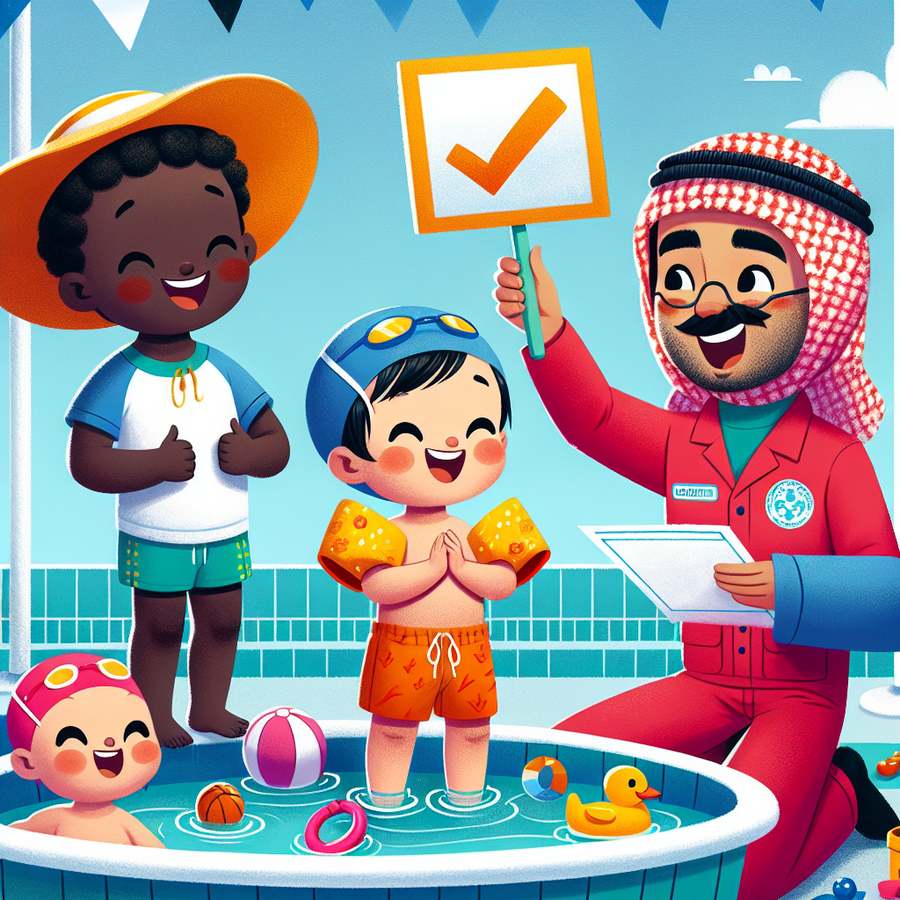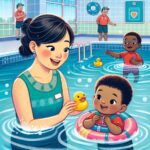As the mercury rises and summer beckons families to the outdoors, understanding and implementing water safety tips for toddlers during summer becomes paramount. With toddlers being naturally curious and eager to explore, water bodies pose a significant risk if proper precautions are not taken. This article delves into essential water safety measures parents and guardians should adopt to ensure a joyful and secure summer for their little ones.
Understanding the Basics of Water Safety for Toddlers
Before diving into the depths of pools, lakes, or oceans this summer, it’s crucial to grasp the fundamentals of water safety. Toddlers are at a stage where they are developing their motor skills rapidly, but they do not have the awareness or the skills necessary to navigate water safely on their own. Recognizing this can help caregivers take proactive steps to safeguard their children.
Enrolling toddlers in age-appropriate swimming lessons can be a life-saving decision. While lessons do not make toddlers drown-proof, they provide an essential layer of protection by teaching basic water survival skills. For more detailed guidance on introducing your baby to swimming, consider reading Introducing Your Baby to Swimming: Best Practices.
Water Safety Tips for Toddlers During Summer
When the summer season is in full swing, and water activities become a daily adventure, there are several water safety tips for toddlers during summer that should never be overlooked. These precautions can help prevent accidents and ensure that water play remains a source of fun rather than fear.
Firstly, never leave toddlers unattended near water, even for a moment. A toddler can drown in as little as two inches of water, making vigilance essential. Equip your toddler with life jackets or flotation devices approved by the U.S. Coast Guard for an added layer of safety. Additionally, educating yourself on infant CPR can be invaluable in an emergency. A useful resource for parents is Understanding Infant CPR: A Lifesaving Guide for Parents.
Creating physical barriers around pools or spas, such as safety covers or fences with self-latching gates, can deter curious toddlers from venturing into dangerous areas. Also, avoid distractions like phones or books when supervising children near water to ensure your attention is not divided. For an in-depth look at safeguarding young children near water during summer, visit How to Ensure Water Safety for Young Children During Summer.
Implementing a Safe Water Play Environment for Toddlers
Creating a safe play environment is crucial for toddlers, especially during water-based activities. This not only involves supervision and preventive measures but also includes engaging in practices that encourage positive experiences with water.
Incorporate educational games that teach water safety in a fun and engaging way. Always stay within arm’s reach when toddlers are in or near water, even if they are wearing floatation devices. Check the water temperature to prevent thermal shock or hypothermia, ensuring it’s comfortable for tender young skin. For additional safety tips specifically tailored for outdoor play environments, How to Create a Safe Play Environment for Toddlers Outdoors offers valuable insights.
Moreover, keeping a close eye on weather conditions and avoiding water activities during adverse weather can prevent unnecessary risks. It’s also beneficial to familiarize oneself with the signs of drowning, which are often not as overt as depicted in movies. Silent and quick, knowing what to look for can be a lifesaving skill.
In conclusion, while the summer season brings opportunities for fun and memorable water activities, it also calls for heightened awareness and preparation regarding water safety for toddlers. By adhering to the outlined water safety tips for toddlers during summer, parents and guardians can ensure their little ones enjoy the water safely. Let’s make this summer a time of joy, learning, and lots of splashy fun, all within the bounds of safety.
Remember, the foundation of water safety begins with supervision and education. For more resources on child safety and wellness, explore Baby Whys and Hows.













